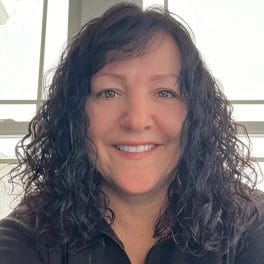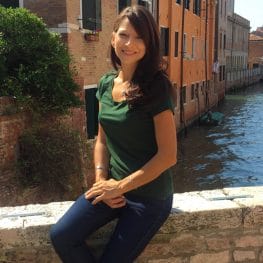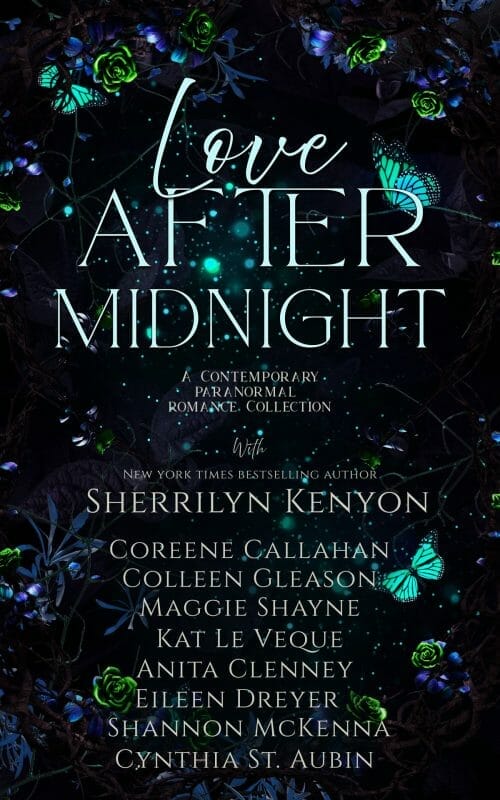
Hello again all of you lovely readers, some of whom may now be writers as well!
If you participated in National Novel Writing Month in November, no matter how many words you got through, you should absolutely take a deep bow and give yourself a huge round of applause. You did the thing!
We do apologize for skipping this blog on the final stretch of things last week, but we had some routine maintenance that needed to be done on the site and we thought it would be best to give you a big double-post this week to make up for it.
So, today we’re going to be talking about first drafts and what to do with them next.
You’ve “finished” NaNoWriMo in whatever way that means for you. You may have finished an entire initial draft or you may still have several days or weeks left of hashing things out before you feel like it’s “done.”
And, throughout this whole process, you’ve likely had that nagging question following you around of “Have I done enough?” And that’s a hard question to answer, especially when this is just one step in getting to a complete manuscript.
In a race, it’s so easy to know when you’re done. You run and run and then you reach the big finish line and that’s that. But writing isn’t like that. There’s no big sign telling you you can let it go and go treat yourself to some donuts and some water. It’s all rather nebulous and we hate to admit it to you, but you’ll almost always feel like you could have done more.
And we’re here to tell you that that uncomfortable feeling is normal. You’re not alone at all. If this is your first time writing, know that there are many seasoned writers who are worrying over the same thing. And if you’re one of those seasoned writers, you know all too well what we’re talking about.
A few weeks ago, we had a reader ask:
What’s your goal with a first draft? Do you want to have a nearly complete story or is it closer to an expanded outline?
As with almost everything we’ve talked about since the start of Behind the Quill, the writing process looks different for all writers. You can rest assured that there is a professional author out there whose first draft looks similar to your own first draft, warts and all.
At one end of the spectrum, some of the first drafts out there might look like a jumble of scenes that need to be linked together in a more cohesive way. Their authors had an idea of what the story would be and wrote their scenes whenever they came to them, which may not be the order in which they appear in the finished novel. They’ll sit with the draft and puzzle out exactly where each piece goes until the picture looks just right.
Some first drafts will be written more chronologically from the start, but they’ll still need work. As Willa Blair perfectly puts it, hers are a:
complete story, but not a polished story. The first draft tells ME the story, introduces ME to the characters. After that, it’s my job to make them fit to be seen by someone else.
Similarly, Jaclyn Reding says it
depends on the story, really. Some of them demand more than others. I typically try to get the whole story down, then go back and flesh it out.
And then, there are the drafts that, once they’re done, they’re practically ready for an editor. As Jill Barnett explains it
I am a writer who builds step by character and motive step, from beginning to end.
She’s very particular about what she lets herself put on the page and likes to make sure it feels absolutely right before she moves on. She goes on to say
My one problem is I often write a scene too early, then hit a wall at the next chapter and have to go back and rebuild the steps. I make mistakes, but I fix it as I go.
Kari Lee Harmon is a little more lenient with herself, but she builds in little checkpoints throughout the book to make sure everything is how it should be.
My first drafts tend to need very little editing because I keep going over them as I write. I can’t help myself. Lol. It drives me crazy leaving them unpolished for too long, yet I don’t want to get bogged down by making them perfect. I tend to write and plot every few chapters as I go, which usually involves a lot of talking heads. Then I polish those chapters with setting details, actions, and chapter hooks, etc. before moving on. I keep a plot outline of what I want to happen and another outline of what I actually wrote as I go along. That way when a new thread comes to me, it’s easy to find spots to weave that through.
(We definitely might be stealing that dual outlines tip and giving it a try. It sounds extremely helpful.)
Another one of our readers pushed the subject further and asked
How much editing do you do before you send it off to your editor?
And we know you’re probably tired of hearing this by now, but this, too, looks different for everyone.
If you’re an author like Jill Barnett, who is so particular with what goes on the page, you may not even write any more drafts. Jill herself says
I do not write drafts. The last 50-75 pages might need cleaning up or expanding because at the end I’m writing so fast and furiously I’m just trying to keep up with my mind, which is bleeding out the story end.
Kari, too, as you’ll remember, doesn’t write more than one draft. Both of these women have processes that leave them with editing at the end, sure, but not much else. And the editing that is done on the books is done within that first draft. To be safe, they probably do create new save files as they make changes, just in case they need something they’ve deleted, but they aren’t whole new drafts.
For Kari, the next step is
When the book is finished, I send it to my critique partners and take a break for that week, then make changes from their feedback as well as adding any final sparkle before sending it to my editor.
Jaclyn Reding also takes a break after her first draft. She says she then does:
a complete read-through. After that edit, or any other editing, before sending it in, I also prefer to “listen” to it read through one final time, out loud, to get the cadence of the words just right.
Before we move on, that last tip is a fantastic one. Sometimes it can do so much for your story to have it read out loud. When you’re writing, you’re in your head. You don’t have to answer to anything besides your own thoughts as they ping pong around…and sometimes that can lead to unnecessary tangents, run-on sentences, or even whole sections that you thought were cool, but once you heard them spoken into the air around you, you realized that they might be a little more awkward, unpolished, etc than you thought. You may realize a joke just does not land, or dialogue sounds unnatural. To be completely honest, as this blog post is being written, the author is doing this exact thing and she’s very glad everyone in her house is otherwise distracted. (Hopefully it helped!)
Finally, many of you will have processes that look like Willa Blair’s. She says:
My draft goes through several iterations: rewrites by me, comments from my critique group and more rewrites, editing/comments from my beta readers and more rewrites, then a run through Autocrit, if there’s time, to catch grammar, punctuation, repetition, etc., things I may have missed during editing.
Some people love writing and rewriting and then rewriting some more so that they feel like they’ve really polished the story to the shiniest it can be. That doesn’t mean that the people who don’t do this, of course, are wrong. Both are completely correct and valid ways to work. They each just focus their extra energy into different portions of the process. Jill and Kari put that energy into the beginning. Jaclyn, it seems, spreads hers out through the whole process. And Willa likes to add that push a little closer to the finish line. They all get to that goalpost, but just in their own time and form.
And you will, too. You’ll get to a point when you know (even if you have a hard time admitting it to yourself at the time) that you have done as much as you can on your own, and now it’s time to get help from others. And that’s all Beta Readers and editors are. They’re collaborators in helping you get your story to where it can be its best self. They’re that friend who walks you back to your car after the race and then makes plans to run together a few times next week so that you can keep honing your skills. Over time you’ll learn more and more how and when to accept that help and what types of help work best for you.
We wish you all the best as you continue to work on your books. And, in case you thought we were done because NaNoWriMo is, we’re not. We still have Behind the Quill posts planned through the end of the year, so keep your eyes on this space so we can hopefully continue to help you as you move on through the next steps of the writing process.

New York Times Bestselling Author Jill Barnett is a master storyteller known for her beautifully-written love stories rich with humor, emotion, and poignancy. In addition to the critical acclaim and numerous awards she has received, her books have been named Best of the Year, earned starred reviews and have been published in 23 languages and appeared on numerous bestseller lists. She lives in the PNW with her family.

Kari Lee Townsend is a National Bestselling Author of mysteries & a tween superhero series. She also writes romance and women’s fiction as Kari Lee Harmon. With a background in English education, she’s now a full-time writer, wife to her own superhero, mom of three sons, one darling diva, one daughter-in-law & two lovable fur babies. These days you’ll find her walking her dogs or hard at work on her next story, living a blessed life.
 Willa Blair is an award-wining Amazon and Barnes & Noble #1 bestselling author of Scottish historical, light paranormal and contemporary romance filled with men in kilts, psi talents, and plenty of spice. Her books have won numerous accolades, including the Marlene, the Merritt, National Readers’ Choice Award Finalist, Reader’s Crown finalist, InD’Tale Magazine’s RONE Award Honorable Mention, and NightOwl Reviews Top Picks. She loves scouting new settings for books, and thinks being an author is the best job she’s ever had.
Willa Blair is an award-wining Amazon and Barnes & Noble #1 bestselling author of Scottish historical, light paranormal and contemporary romance filled with men in kilts, psi talents, and plenty of spice. Her books have won numerous accolades, including the Marlene, the Merritt, National Readers’ Choice Award Finalist, Reader’s Crown finalist, InD’Tale Magazine’s RONE Award Honorable Mention, and NightOwl Reviews Top Picks. She loves scouting new settings for books, and thinks being an author is the best job she’s ever had.

Jaclyn Reding’s award-winning, bestselling historical and contemporary romance novels have been translated into nearly a dozen languages. A National Readers’ Choice Awards finalist, and Romance Writers of America RITA Award nominee, she is the proud, proud mom of two grown sons, and willing minion to an elderly cairn terrier and a tuxedo cat. Home is with her family in New England, in an antique farmhouse that she suspects is held together purely by old wallpaper and cobwebs. A lifelong equestrian, she spends her free time in the saddle, going over plotlines and character arcs with her confidant and toughest critic, a very opinionated retired racehorse named Brunello.





